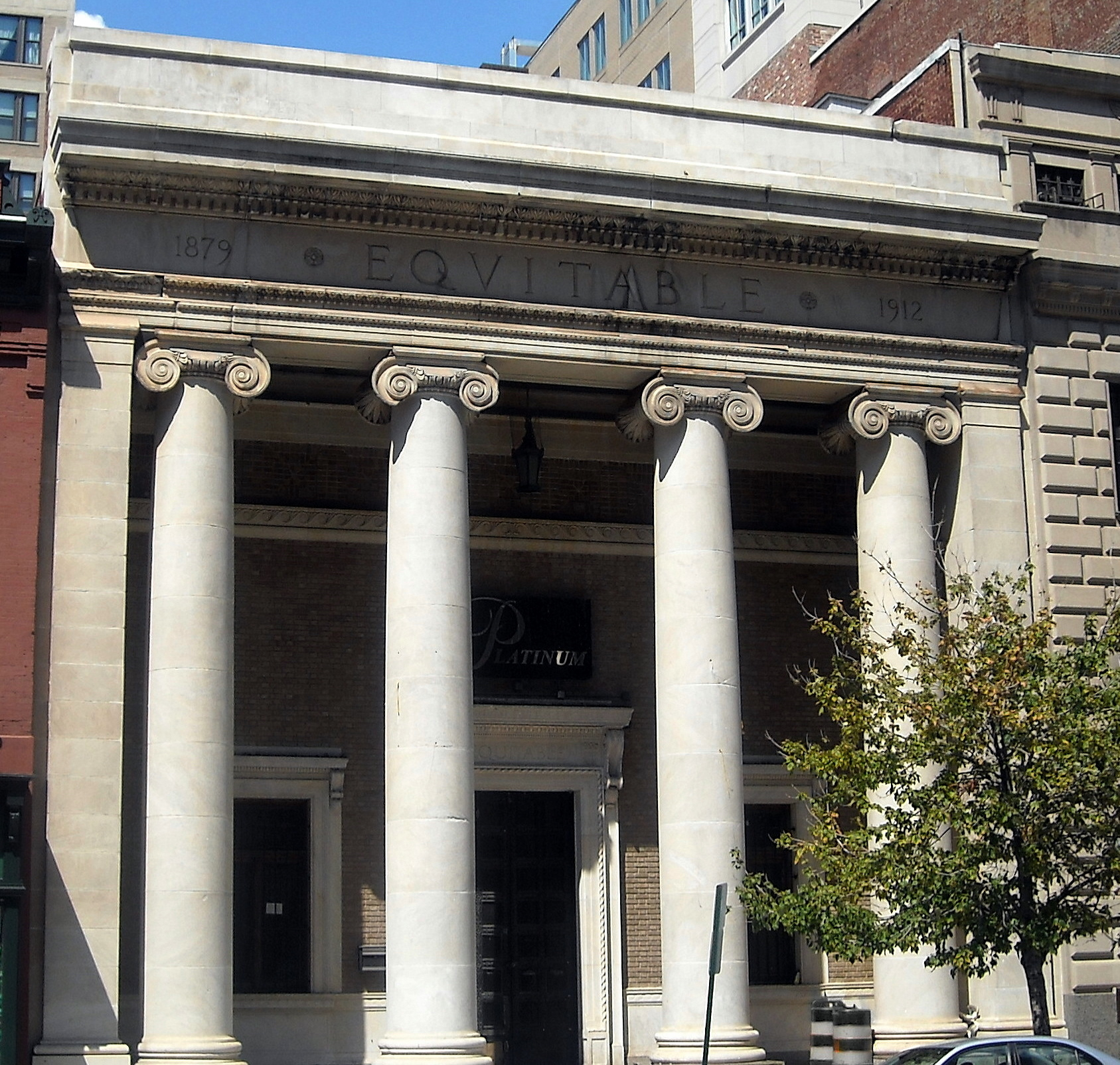by John Muller, May 3, 2012 10:21am, Greater Greater Washington
“Is this a nightclub, again?” a passerby asked last week, walking along the 900 block of F Street NW. “Nope, DC Preservation League party,” a middle-aged man said as he walked through the wood doors to the Equitable Building at 915 F Street NW, formerly the Platinum nightclub.
Once an innovative community bank, the property has been vacant for the past year. Douglas Development Corporation purchased this historic building last fall and plans to redevelop it, potentially as part of an emerging fashion district in the area.
“This is a significant building to F Street,” said DCPL’s Executive Director Rebecca Miller. “It’s a mix of eclectic and classic architectural styles that over the years has maintained its integrity. This is one of only 15 interiors designated an historic landmark in the city.”
“People cherish their recent memories of this building as a nightclub, but this was one of the first progressive community banks in Washington,” said John DeFerrari of Streets of Washington, who attended the Preservation League fundraiser.
According to DeFerrari, the Equitable Co-Operative Building was built in 1912, and was the headquarters for the Equitable Co-Operative Building Association. Equitable was a pioneering thrift institution co-founded by John Joy Edson, a leading financier and philanthropist who believed that facilitating home ownership would provide stability to the city by improving its housing stock.
In 1985, Equitable moved out of the city. A nightclub called The Bank moved into the space and proceeded to remove the mahogany teller counters to make space for a dance floor. Within a couple years, the Fifth Column, another dance club, moved in and featured avant garde artwork juxtaposed against the restrained elegance of the building’s original architecture. In 1995, Fifth Column closed. Before the end of the decade, Platinum nightclub debuted, but by 2008 it, too, closed.
Despite the changes in the building over the years, the architectural value of the building and its interiors remain intact.
“You’re never going to see this type of craftsmanship,” said John D. Bellingham of Monarc Construction and President of DCPL’s Board of Trustees, remarking on the dentil molding, cornices, and frieze architecture.
“It’s proven that a city that retains its historic character attracts more tourists,” Bellingham said while lamenting “slap-happy” renovations that can do more to distort historic preservation than support it.
“Walking into this place is like walking into the National Portrait Gallery,” said Douglas Jemal, president of Douglas Development Corporation, as his eyes scanned the interior. “Look at the grandeur. This is a special place and deserves a special tenant. None of that strip mall [expletive].”
Noting clothier Ralph Lauren as a possible tenant, Jemal said there is a growing interest among European and American fashion retailers to establish a presence in Washington. Forever 21, H&M, and Zara have stores nearby.
Whether the Equitable Building becomes part of an reemerging downtown fashion district or an upscale restaurant, preservationists agree the development of the Equitable Building will retain the neighborhood’s historic character.
“Like so much of the city, I’d love to see another old ghost of a building get a second chance at a new life,” said another preservationist. “Saving buildings like this one preserves the soul of our city and keeps us connected.”

